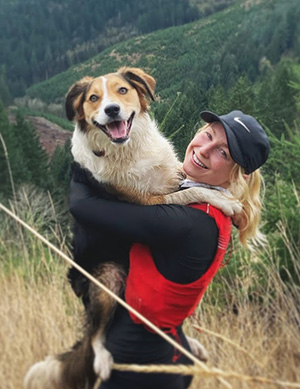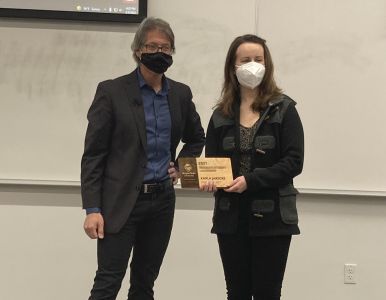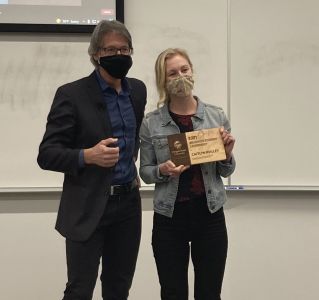Swiss needle cast, a foliage disease specific to Douglas-fir resulting in needle loss and reduced growth, is perhaps the most well-studied foliage disease globally. Knowledge about this disease, caused by the native pathogenic fungus Nothophaeocryptopus gaeumannii, is used to study other foliage diseases worldwide.
This is due to the influence of the Swiss Needle Cast Cooperative at Oregon State University. “Since 1996, the cooperative has been focused on research and management of Douglas-fir in zones where Swiss needle cast occurs,” says professor and forest health specialist Dave Shaw, the current director of the cooperative.
Now, a quarter of a century later, the cooperative has published an article in the Journal of Forestry, summarizing their current understanding of Swiss needle cast based on twenty-five years of research.
Swiss needle cast, considered one of the top threats to Douglas-fir plantation health and productivity in western Oregon, Washington and SW British Columbia, was first identified on Douglas-fir growing in Switzerland in the early 20th century. Forest pathologists in North America found the fungus was common in native Douglas-fir stands but was not causing problems.
The disease emerged in Christmas tree plantations in Washington and Oregon in the 1970s, and by the 1990s, it had intensified in coastal Oregon and Washington Douglas-fir plantations. In January 1997, in response to the disease epidemic, the Swiss Needle Cast Cooperative was formed by private forest landowners, federal and state agencies, and the Oregon State University College of Forestry to conduct research and address management practices.
“The more we learn, the better we will be able to sustain the productivity of our forests,” Shaw says. “However, this is a native disease that has a role here in the PNW, and we have some ability to manage forests effectively in the presence of the disease.”
Swiss needle cast symptoms include chlorotic, yellowish foliage, low needle retention, thin crowns and reduced tree growth. The fungus occurs wherever its only host, Douglas-fir, is grown. Disease, however, is only expressed when the fungus causes significant defoliation of two and three-year-old needles.
This, says Shaw, is an essential point for managers. The fungus may be present and yet have no effect on Douglas-fir productivity.
The fungus lives inside the needles of Douglas-fir. It only impacts needle function when fungal fruiting bodies called pseudothecia emerge into and plug the stomates, or air pores, on the underside of the needle, blocking gas exchange. When too many stomates on a needle get plugged, the needle dies and is cast, or dropped, from the branchlet.

Even after twenty-five years of research, Shaw says the science can still be surprising.
“We recently found that Swiss needle cast is distinctly a young tree disease, and older stands, except in extreme examples, are not as affected. There is something unique about young stands that makes the disease more prevalent,” Shaw says. This work was based on collaborations between graduate student Sky Lan, Shaw, and scientists from the Environmental Protection Agency who climbed mature and old-growth trees over two hundred feet tall to get samples and measure microclimate.
While Shaw and others do not yet know why this disease affects younger trees more often, they hypothesize the difference may be due to temperature dynamics within the canopy.
According to Shaw and Gabriela Ritokova, the associate director of the cooperative and a forest pathologist with the Oregon Department of Forestry, the management of Swiss needle cast is nuanced and site-specific. A “Guide to the Silviculture of Swiss Needle” is available on the Swiss Needle Cast Cooperative website.
Shaw explains that future challenges include understanding how climate change will influence the disease.
“Epidemiology-wise, winter temperature, and late spring-summer leaf wetness control disease,” Shaw says. “As we continue to increase winter warming, we may see the disease spread from the core areas now impacted to higher elevations and the western Cascades.“
A version of this story appeared in the Spring 2022 issue of Focus on Forestry, the alumni magazine of the Oregon State University College of Forestry.















